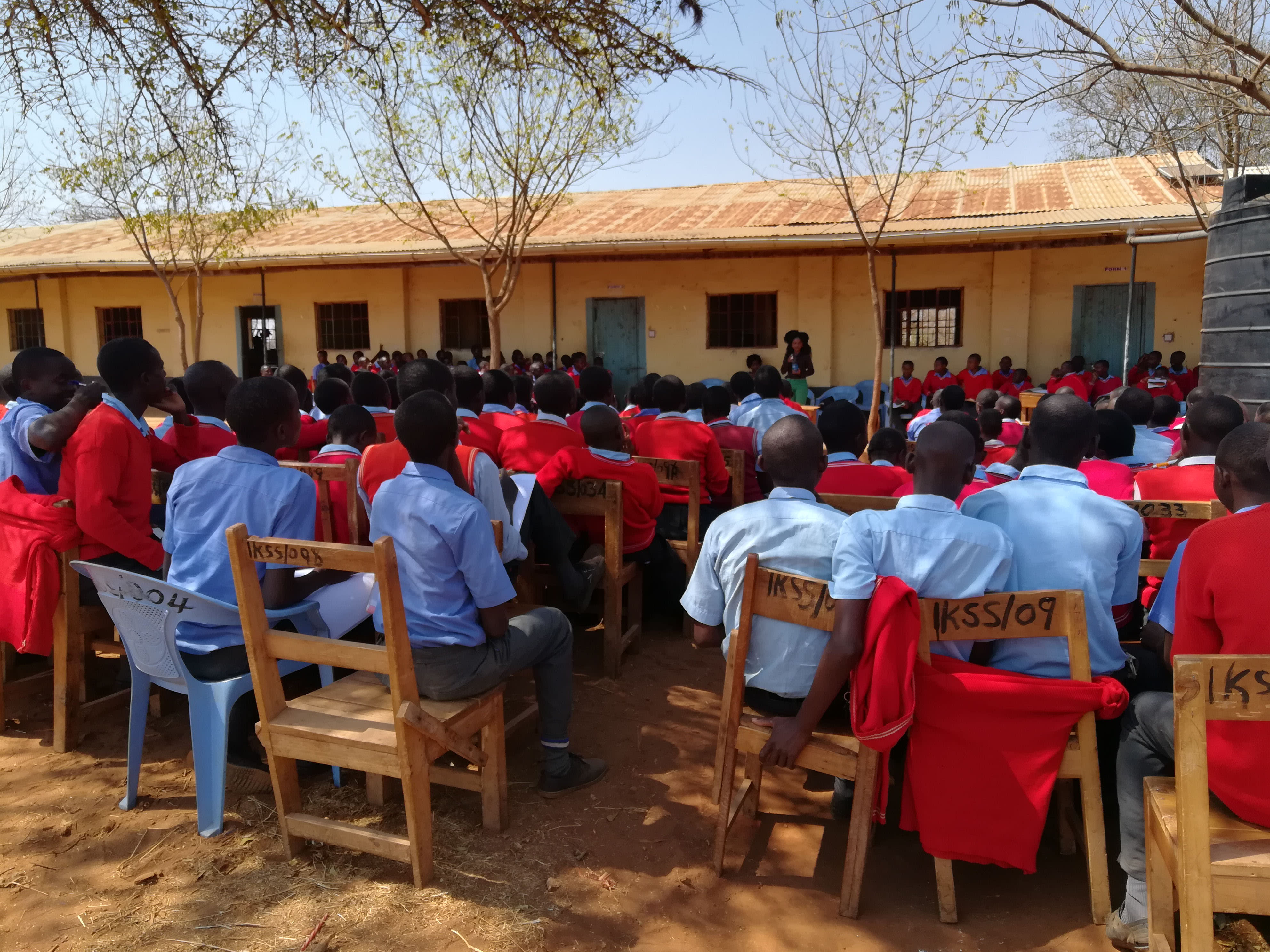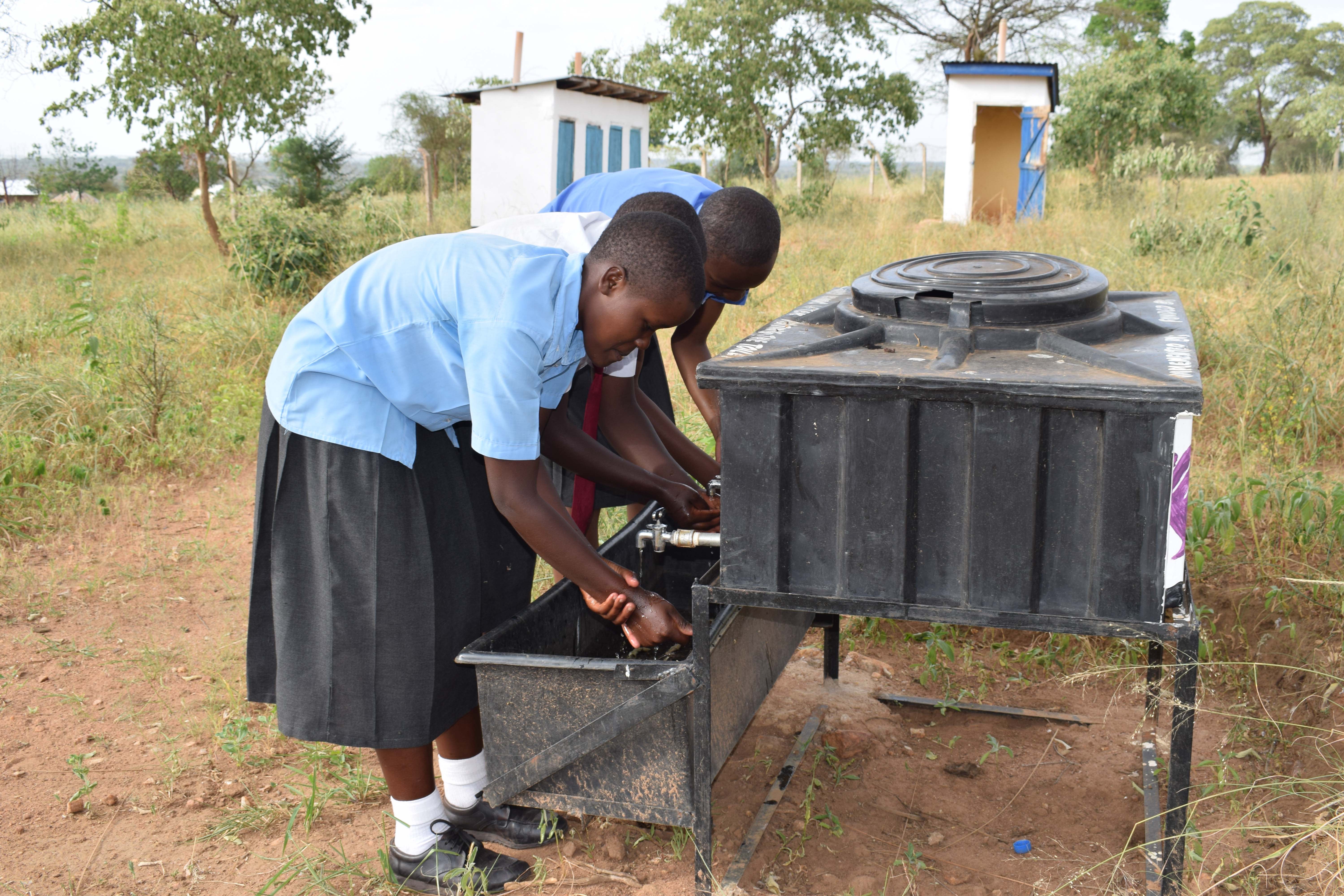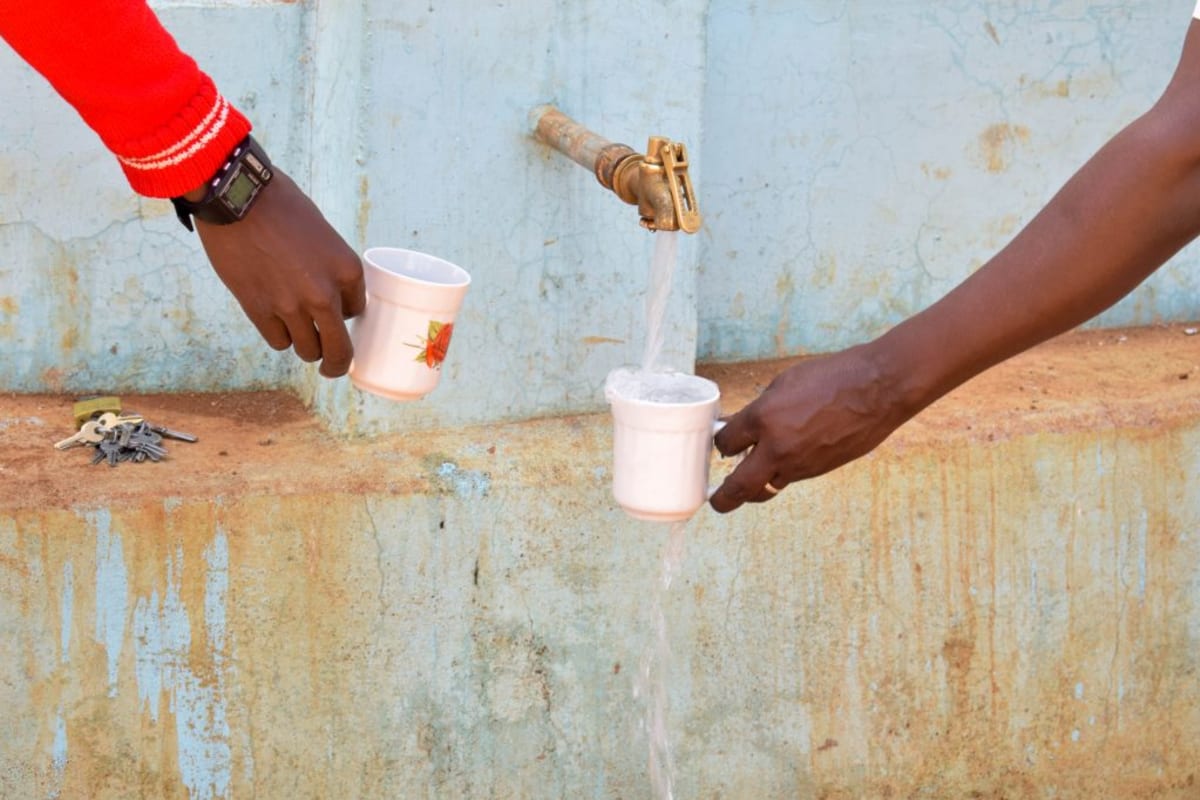Ikaasu Secondary School was started in 2003 to serve the children of Ikaasu Village, Makueni County of Kenya. It has both day students and boarders. Being a fairly young school, it has been struggling to rise above hardships and compete with other schools in the country. Among its major challenges has been water scarcity due to the arid land and weather in the area. This has forced them to only allow female boarders at this time.
The school enjoys a close relationship with Ngwatanio ya utui wa Maluvyu Self-Help Group, which has been working with ASDF since 2016. A majority of members have students at the school, and thus are aware of the dire water situation. It is for this reason that they proposed constructing a water tank at the school to help alleviate the suffering that their children go through.
Water
The school has three 5,000-liter plastic tanks guttered to catch rainwater. They also have a 10,000-liter plastic tank that is not operational. The school buys water from community members, who shuttle 20-liter jerrycans on their donkeys’ backs. They fetch water from holes dug in the Ikaasu River. Each jerrycan is sold to the school for 15 shillings.
The school is also connected to a piped water system from the Matinga Community water project, which is not reliable. For example, at the time of writing this, the pipeline had been broken for a month. During the dry season, water brought via donkeys just isn't enough. The school must also order trucks that supply water at 5,000 shillings for 5,000 liters. Day scholars are sometimes required to carry water from their homes to help fill these plastic tanks. When full, water from the available tanks only lasts the school for 11 days.
19-year-old Mule Musau said, "As a day scholar, I am sometimes required to report to school with water in a five-liter jerrycan. It has not been easy in such times, as it comes with tiredness and burden on top of my normal school bag. The water is not safe for drinking and poses health risks to the school fraternity."
To avoid running out of water, the school has set a daily ration of five liters per student.
Rainwater caught in the tanks is safe for drinking, but becomes contaminated as the water delivered by locals is dirty. After drinking, students suffer from waterborne diseases like amoeba, typhoid, bilharzia, and ringworm.
Sanitation
Sanitation standards at the school have been greatly compromised by the water shortage, which exposes students to even more health risks. Boarding students are only provided with five liters of water per day for all of their needs, including bathing!
There are 10 pit latrines that are in good structural condition, but are not cleaned regularly. There are four bathing rooms for the boarders, and one hand-washing station. However, there is no soap available at the station.
Trash is thrown in a designated area, but the school needs to dig a pit to prevent it from blowing back around and littering campus.
Caroline Mbula told us, "Boarding students get only five liters of water a day. It is not easy maintaining body and clothes cleanliness with such a meager amount of water. Our agriculture projects have greatly suffered the water menace as there is no enough water for irrigation - this has served to discourage students from taking the subject."
Here's what we're going to do about it:
Training
Students and staff will be trained for one day. Those in attendance will form a school health club that will promote good hygiene and sanitation practices both at school and home. They will learn all of the steps to proper hand-washing, how to treat water, and how to keep their environment clean. The school will also be taught how to best oversee and maintain their new rainwater catchment tank and hand-washing stations.
Hand-Washing Stations
Three hand-washing stations will be delivered at the project’s completion. These are 1,000-liter plastic tanks fitted with four taps. The health club and school management will be responsible for making sure tanks are filled with water and that a cleaning agent such as soap or ash is available.
Rainwater Catchment Tank
We will build a 104,000-liter rainwater catchment tank for this school. This water will benefit the students, teachers, and supplementary staff. Parents will mobilize the materials needed for construction, such as sand and stone. They will also lend some strong arms to help with the actual construction.
The huge capacity of this tank makes the others look tiny in comparison; 104,000 liters should be enough water to carry students through the entire dry season. As soon as the tank has time to cure, it can begin to collect rainwater for drinking, cooking and cleaning!
This project is a part of our shared program with Africa Sand Dam Foundation. Our team is pleased to provide the reports for this project (formatted and edited for readability) thanks to the hard work of our friends in Kenya.

 Rainwater Catchment
Rainwater Catchment
 Rehabilitation Project
Rehabilitation Project





























